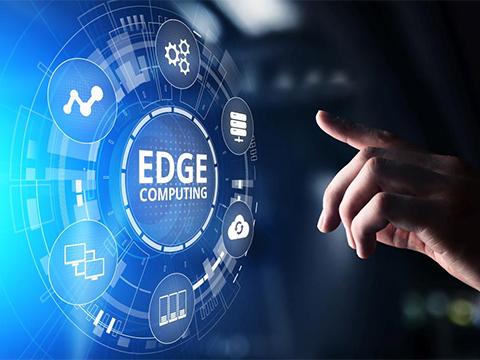
Posted to News on 29th Sep 2022, 08:44
Four factors driving the growth of Edge Computing

Greg Hookings, director of business development for the EMEA region at Stratus Technologies, examines the push of Edge Computing into the mainstream.
With Edge Computing, operations technology (OT) teams are able to provide critical data processing at the very edge of a network rather than in the cloud of via a centralised data warehouse. Such real-time data processing can significantly improve the way many of these organisations run their business, and in doing so, deliver many powerful new benefits.
To fully understand the growth of Edge Computing – and the opportunities it presents – let’s take a closer look at four key factors that are pushing Edge Computing into the mainstream.
The Internet of Things (IoT)
Worldwide, the number of IoT devices has been forecast to triple from 9.7 billion IoT devices in 2020 to more than 29 billion in 2030, according to Statista. The estimated value is more than a staggering $1 trillion. This represents a significant growth of devices, and a continued growth over the coming years.
So, why Edge Computing and where does it fit as the better alternative in IoT environments? While most information will be uploaded and processed via the cloud, many business-critical applications demand real-time data. This requires the use of a physical or virtual computing infrastructure on the edge of the network to minimise the bandwidth needed to access data that is centrally stored.
Real-time business decisions
Just as IoT is becoming more mainstream, more industries are using the technology to leverage real-time data to drive better decisions. The impact of IoT is well documented in industries such as retail and healthcare. But today what was once an emerging technology is now helping to revolutionise industries in need of innovation, such as manufacturing, transportation, energy, food and beverage, and waste management. Together, Edge Computing and IoT provide organisations a robust solution for analysing critical data in real-time.
Using the manufacturing industry as an example, many manufacturers collect data on the shop floor via IoT sensors and analyse that data to drive predictive maintenance and optimise machine performance. Every IoT device – from robotic arms, HVAC units, assembly systems, or any intelligent device – collects data for processing and analysis. Edge Computing processes that data instantly and arms manufacturers with the information to make faster, more informed decisions optimising the supply chain, streamlining production, and reducing costs.
Improved security and compliance
IT teams are sensitive to the risks involved whenever data is transferred between devices and the cloud. Edge Computing alleviates the risk by making much of that data transfer avoidable in some environments. An edge platform makes it possible to filter sensitive information locally and only transfer data important to model-building information to the cloud. This means enterprises can keep building an adequate security and compliance framework that meets their needs and ensures compliance with audits.
Closing modernisation gaps
IoT and Edge Computing are driving the next wave of data centre modernisation and improvement. Virtualisation represents an affordable means of updating and innovating IT environments and addressing immediate needs with cutting-edge technology without breaking the bank. What’s more, an edge platform enables enterprises to capitalise on modern devices without sacrificing existing legacy systems.
That’s because Edge Computing devices can be used as a communication bridge between legacy systems and modern machines. This allows legacy industrial environments to connect to modern devices or IoT solutions and provides immediate benefits of capturing and integrating real-time data from both legacy systems and modern devices for better decisions.
Gartner predicts that “by 2025, more than 50% of enterprise-managed data will be created and processed outside the data centre or cloud.” The modern data architecture will include the edge, and enterprises need to make plans to capture the opportunities and prepare for the challenges of managing data in edge environments.
For any organisation to reap the maximum benefits that Edge Computing can deliver, a new technology approach and computing infrastructure are needed. New innovations, such as the Stratus ztC Edge, provides built-in virtualisation, automated protection, and managed services – all to provide versatile computing platform for running business critical applications.
Stratus Technology’s interactive Edge Computing Experience (ECX) showcases how organisations can leverage edge platforms to harness data from critical equipment and processes, converge OT and IT, and run industrial software with unmatched reliability. Explore ECX to discover crucial insights on both the environments and use cases that drive Industry 4.0 insight, efficiency, and safety.
Want the latest machine building news straight to your inbox? Become a MachineBuilding member for free today >>
Stratus Technologies Systems Ltd
Watermans House
Watermans Court
TW18 3BA
UNITED KINGDOM
+44 (0)1784 415220

















